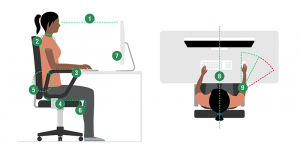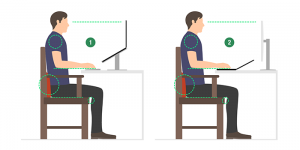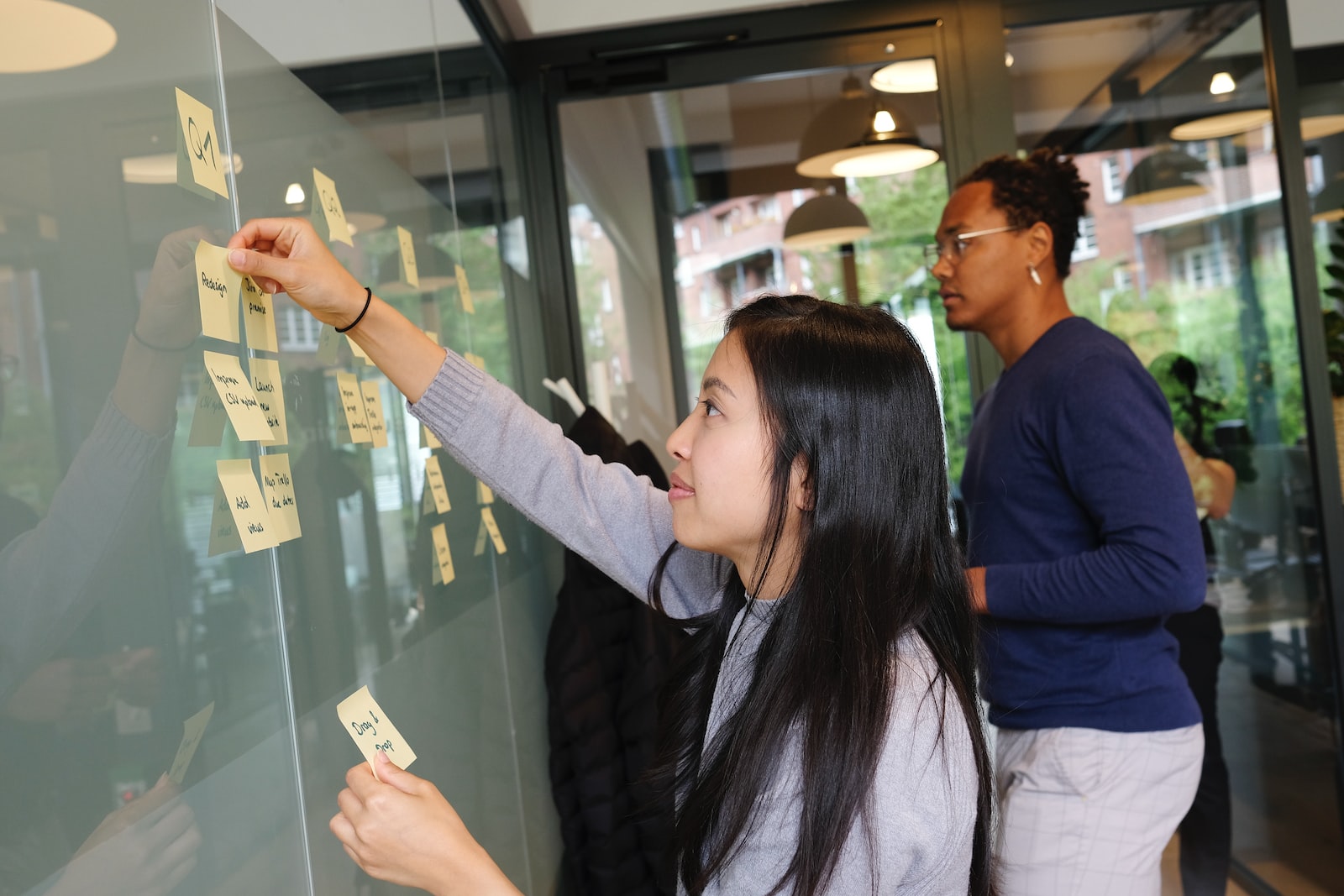Earlier this month, Workplace Wellbeing Professional had the opportunity to catch up with leading health experts at the Health and Work Conference ran by HSE.
The annual event draws together professionals across the UK to inform, educate and promote workplace safety and reduce work related stress and mental health issues. Chair of HSE, Sarah Newton, encourages employers to think about the following three questions:
1) How can you help keep workers healthy, when the line between workplaces and homes has become blurred?
2) How can you manage risks when the work that you do is set to change radically due to technological advances?
3) How can you maintain a wellbeing culture in your organisation during periods of significant business transformation and change?
Mims Davies, Minister for Social Mobility, Youth and Progression, highlighted how 2019/2020 saw 38.8 million working days lost due to work related ill health and work-related injuries. Half of these are thought to be due to stress, depression and anxiety. In light of this, Workplace Wellbeing asked Angela Matthews, Head of Policy and Research, Business Disability Forum, the following question:
What advice would you give to CEO’s to help implement workplace wellbeing?
Angela said:
We often ask employees in our organisations, ‘what do you want to see your leaders doing to improve wellbeing in the workplace?’ I’ll never forget what one employee said to me recently..
After I asked him what he would like to see his leader doing, he said ‘I’d just love to see him eat a sandwich’. They [the employee] explained that when the CEO leaves his desk, he continues writing his emails on his phone as he walks from his office to the bathroom, and then downstairs to go and buy his food in the restaurant. Then, he’ll bring his food back up to his office and eat it while he is on the phone. This employee said, ‘I want to see him eat a sandwich without his phone, and that will let me know that that is okay to do.’
Another employee found that wellbeing in their workplace had improved. So, we got on the phone to find out how, and the answer was simple: ‘I saw the director general go for a walk.’ I asked how it made them feel. And they said, ‘it wasn’t just me; the director general got many messages to say we love that you went for a walk!’ So, the director general invited people to come for a lunchtime walk with him. It didn’t cost any money; it was just going for a walk.
I hugely underestimated how much employees noticed small acts such as eating a sandwich or going for a walk. So, what can leaders do? I say: take care of yourself in a very visible way so employees can see you doing it and know that it is okay for them to take care of themselves too. I think that’s it.
Angela Matthews, Head of Policy and Research, Business Disability Forum
The signs, symptoms and management of work-related stress
In 2020/2021, it was found that stress, depression or anxiety accounted for 50% of all work-related ill health cases emphasising the need for awareness and action.
Often, stress is the reaction people have to excessive pressures or other types of demand placed on them at work. Elizabeth Goodwill, head of work-related stress and mental health policy at HSE, explains what the harsh nature of stress can lead to:
- Mental health issues such as anxiety and depression
- Physical health issues such as diabetes, heart problems and digestion issues
- Addiction issues such as alcohol or drug abuse
Under the Health and Safety at Work Act 1974, employers have a duty that as far as is reasonably practicable, their workplaces are safe and healthy. This does not relate to physical health alone, in which the psychological welfare of employees should be carefully considered too.
Jen Webster, registered occupational psychologist at HSE, explains the best approach to handling workplace stress is to adhere to the following management standards:
1) Identify the risk factors
2) Who can be harmed and how?
3) Evaluate the risks
4) Record your findings
5) Monitor and review
There are a set of conditions within any business, that can cause or be a potential to cause stress in individuals. If organisations make sure that they adhere to these standards, they can actually reduce the level of work-related stress in the business and can create an environment where people can flourish.
Jen Webster, registered occupational psychologist at HSE
When considering stress, employers should think carefully about six different topics. Firstly, ‘demand’ – do your employees have enough time to do their job within their contracted hours? Secondly, ‘control’ – do your employees have enough say regarding pace/time over the task you’ve given? ‘Support’ – are you providing your employee enough practical and emotional support to get the job done? ‘Relationships’ – are staff happy working together and have any workplace conflicts been resolved? ‘Role’ – are your employees clear on what their role is? Finally, ‘change’ – have your employees been properly informed about any upcoming changes to the team or organisation?
Tackling stress works best when handled like a project and incorporates communication across the entire organisation. Recognising the initial signs, such as loss of motivation or increased emotional reactions, is a great way to start. However, understanding the impact stress can have on an individual is very important too.
Remember, stress or poor mental health can affect anyone at any grade within the organisation.
Elizabeth Goodwill, head of work-related stress and mental health policy at HSE
Managing musculoskeletal disorders
During the years 2019/2020, in the UK MSD’s accounted for 30% of all work related ill health. This generated an estimated 8.9 million working days lost shedding light on the importance of physical welfare in the workplace.
Musculoskeletal disorders (MSDs) are conditions that can affect your muscles, bones, and joints. The most common disorders include back pain, trauma and arthritis. Matt Birtles, science division ergonomist, explains how these disorders can be triggered in the workplace:
- Single excessive force – in one single excursion, the worker goes beyond what their body can cope with (i.e lifting something too heavy), causing something to ‘twang’ or ‘snap’.
- Repetitive work – the worker repeats the same task without a significant break (i.e via manual packaging.) The soft tissue in the workers back, called discs, begins to experience prolonged wear and tear. Every time the move is repeated, pressure is put on the discs causing them to squash eventually causing a bulge or tear.
- Fixed postures – The worker is holding a heavy object, for example, and is performing a task such as static loading. The prolonged tension and weight of the object causes muscles to quickly fatigue.
When supporting employees who complain of back pain, Birtles advises managers to look beyond one singular incident:
We nearly always look at the activity they were doing at the onset of pain. We see this an awful lot. But in actual fact, it’s a bit of a misnomer.
If you do get somebody with an injury, don’t just ask what they were doing at the onset of pain. Ask them what they’ve been doing this week. What are their top five tasks they tend to do – and assess all of those tasks. It’s not a perfect picture to the type of exposure they’ve had, but it’ll give you a far better risk profile of the activity compared to just looking at the one activity they did at the onset of injury.
Matt Birtles, science division ergonomist
The Manual Handling Regulations 1992 lay out the requirements organisations must adhere to when handling heavy objects. The workplace must firstly avoid hazardous manual handling operations where possible. Circumstances where this cannot be avoided, they must be properly assessed (via MAC, RAPP, L23) to ensure they are as safe as possible. Finally, organisations are expected to reduce the risk of worker injury as much as possible.
Easy steps to help reduce musculoskeletal disorders in the workplace:
Employers should administer training to their workforce. Training will help employees recognise what good posture looks like. Chairs and other furniture around the office should be adjusted accordingly to achieve the desired posture. Employees should also know how to arrange their desk space correctly including screen positioning and lighting to avoid reflections and glare. Employees should be aware of the importance of taking breaks and changing up their activities throughout the day. Finally, managers should complete risk assessments to ensure standards are being upheld, and report any problems.


Hybrids workers should receive a similar level of support. Employers should have regular discussions with employees to review their home working arrangements. They should also ensure that adequate provision is made so hybrid workers can achieve a comfortable, sustainable posture.
Creating a safe, strong and happier workplace
Mental and physical health often go hand in hand. A walk in the park or around the office not only benefits individuals physically, but makes mangers visible to colleagues who will gain the confidence to do the same.
Ultimately, peer to peer learning is an effective way of understanding or training a team to do something new or learn a new skill. Whats more – you may meet a staff member you don’t often see, or talk to colleague on the office you don’t normally communicate with. Either way, you are moving and changing posture in conjunction with changing your mind which all benefit mental and physical wellbeing – it’s worth a try.
FIND OUT MORE:
Please find below links for further reading / useful material:
- https://healthandworkconference.co.uk/assets/uploads/resources/work-related-stress-useful-links-636532083a7b1.pdf
- https://healthandworkconference.co.uk/assets/uploads/resources/managing-musculoskeletal-disorders-useful-links-636531b1411ff.pdf
Joanne is the editor for Workplace Wellbeing Professional and has a keen interest in promoting the safety and wellbeing of the global workforce. After earning a bachelor's degree in English literature and media studies, she taught English in China and Vietnam for two years. Before joining Work Well Pro, Joanne worked as a marketing coordinator for luxury property, where her responsibilities included blog writing, photography, and video creation.



